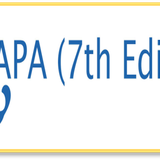Bagaimana Peran Tata Kelola Perusahaan Dalam Hubungan Antara Manajemen Laba Dan Risiko Idiosinkratik di Indonesia?
DOI:
https://doi.org/10.24912/je.v26i2.748Abstract
This study aims to investigate the effect of accrual earnings management and real earnings management on idiosyncratic risk. In addition, this study also examines the role of corporate governance in the relationship between the two. This study uses a quantitative approach. Research data obtained from www.IDX.co.id and www.finance.yahoo.com in financial report data and company stock prices from 2012 to 2017 are listed on the Indonesia Stock Exchange. Based on purposive sampling, the total sample of this study amounted to 244 observations. Hypothesis testing is conducted by employing multiple linear regression analyses for panel data. This study suggests that real earnings management and accrual earnings management have a positive effect on idiosyncratic risk. This study also finds that corporate governance fails to weaken the relationship between earnings management and idiosyncratic risk. This study indicates that the Indonesia Financial Services Authority needs to coordinate with the Indonesian Institute of Accountants to reduce earnings management actions by companies listed on the Indonesia Stock Exchange.
References
Al 'Alam, M. P. A., and Firmansyah, A. (2019). The effect of financial reporting quality, debt maturity, political connection, and corporate governance on investment efficiency: evidence from Indonesia. International Journal of Innovation, Creativity and Change, 7 (6), 39-56
Anggiyanti, L. D. (2018). Pengaruh idiosyncratic risk dan likuiditas saham terhadap return saham perusahaan manufaktur yang terdaftar di Bursa Efek Indonesia (BEI). Jurnal Manajemen Bisnis Indonesia, 7(4), 390-399.
Anwar, S., Singh, S., and Jain, P. K. (2015). Cash dividend announcements and stock return volatility: evidence from India. Procedia Economics and Finance, 30, 38-49. https://doi.org/10.1016/S2212-567 (15) 01253-8.
Aziz, T., and Ansari, V. A. (2017) Idiosyncratic volatility and stock returns: Indian evidence. Cogent Economics & Finance, 5(1), 1-20. https://doi.org/10.1080/23322039.2017.1420998.
Bozhkov, S., Lee, H., Sivarajah, U., Despoudi, S., and Nandy, M. (2018). Idiosyncratic risk and the crosssection of stock returns: the role of mean-reverting idiosyncratic volatility. Annals of Operations Research, 1-34. https://doi.org/10.1007/s10479-018-2846-7.
Bowman, E. H. (1980). A risk/return paradox for strategic management.
Cahyati, A. D. (2011). Peluang Manajemen Laba Pasca Konvergensi Ifrs: Sebuah Tinjauan Teoritis Dan Empiris. Jurnal F. Ekonomi : JRAK, 2(01), 1–7.
Chang, S. H., Wang, T. S., Chiu, A. A., and Huang, S. Y. (2015). Earnings management and idiosyncratic risk-evidence from the post-Sarbanes-Oxley Act period. Investment Management and Financial Innovations, 12(2), 117–126.
Chen, C., Huang, A. G., and Jha, R. (2012). Idiosyncratic return volatility and the information quality underlying managerial discretion. Journal of Financial and Quantitative Analysis, 47(04), 873–899. http://doi.org/10.1017/s002210901200018x.
Chen, H., Lin, C., Kao, T., and Wei, T. (2016). The Effects of Corporate Governance on Idiosyncratic Risk: Evidence from Financial Institutions in Taiwan, 4(2), 17–24. https://doi.org/10.15640/jfbm.v4n2a3.
Cheung, Y. L., Thomas Connelly, J., Limpaphayom, P., and Zhou, L. (2007). Do investors really value corporate governance? Evidence from the Hong Kong market. Journal of International Financial Management & Accounting, 18(2), 86-122.
Cheung, Y. L., J. Thomas Connelly, Jesus P. Estabislao, Piman L., Tong Lu, and Sidharta Utama (2015). Corporate Governance and Firm Valuation in Asian Emerging Markets. Corporate Governance in Emerging Markets: Theories, Practices and Cases: 27-53.
Chichernea, D. C., Petkevich, A., and Zykaj, B. B. (2013). Idiosyncratic volatility, institutional ownership, and investment horizon. European Financial Management, 21(4), 613-645. http://doi.org/10.1111/j.1468-036X.2013.12033.x.
Chowdury, S. S. H., and Hossain, M. (2019). Is idiosyncratic volatility priced in Bangladesh stock market? International Journal of Economics and Management, 13(2), 305-317.
Cohen, D. A., Dey, A., and Lys, T. Z. (2008). Real and accrual-based earnings management in the pre-and post-Sarbanes-Oxley periods. The accounting review, 83(3), 757-787.
CSLA Limited (2018, 5 Desember). CG Watch 2018: Hard decisions. https://www.clsa.com/wp-content/uploads/2018/12/CG-Watch-2018-Short-version-181205-L.pdf.
Darmawan, J. F., Murhadi, W. R., and Mahadwartha, P. A. (2017). The influence of idiosyncratic volatility, market risk, and size on stock return of a non-financial company registered in Indonesia Stock Exchange in the period of 2012 – 2016. Journal of Management and Business, 16(1), 12-18. https://doi.org/10.24123/jmb.v16i1.277.
DeFond, M., Hu, X., Hung, M., and Li, S. (2011). The impact of mandatory IFRS adoption on foreign mutual fund ownership: The role of comparability. Journal of accounting and economics, 51(3), 240-258.
Djatmiko, H.E. (2004). Ada Kemajuan, Banyak Keprihatinan, SWA, XX, 4.
Edriyani, N. A. (2017). Analisis Perbandingan Praktik Manajemen Laba pada Perusahaan Syariah di Indonesia dan Malaysia: Studi pada Perusahaan Manufaktur Syariah yang Terdaftar dalam Bursa Efek Indonesia dan Bursa Malaysia Berhad. Skripsi: Fakultas Ekonomi dan Bisnis, Universitas Gadjah Mada.
Falbo, T. D., dan Firmansyah, A. (2021). Penghindaran pajak di Indonesia: multinationality dan manajemen laba. Bisnis-Net Jurnal Ekonomi dan Bisnis, 4(1), 94-110.
Fama, E. F., and French, K. R. (1993). Common risk factors in the returns on stocks and bonds. Journal of financial economics, 33(1), 3-56.
Fanani, Z. (2014). Karakteristik Perusahaan dan Corporate Governance terhadap Manajemen Laba: Studi Analisis Meta. Jurnal Keuangan dan perbankan, 18(2), 181-200.
Fazil, G., and İpek, A. (2013). Does Idiosyncratic Volatility Matter in the Emerging Markets? Istanbul Stock Exchange Evidence. Economic Research-Ekonomska Istraživanja, 26(3), 133–150.
Firmansyah, A., dan Irawan, F. (2018). Adopsi IFRS, manajemen laba akrual dan manajemen laba riil. ASSETS: Jurnal Akuntansi dan Pendidikan, 7(2), 81-94.
Firmansyah, A., and Irawan, F. (2019). Do IFRS adoption and corporate governance increase accounting information quality in Indonesia? Accounting Analysis Journal, 8(1), 59-65.
Firmansyah, A., and Yusuf, Y. (2020). The value relevance of corporate disclosures: social responsibility, intellectual capital, corporate governance. ASSETS: Jurnal Akuntansi dan Pendidikan, 9(1), 61-71.
Firmansyah, A., and Triastie, G. A. (2020). The role of corporate governance in emerging market: Tax avoidance, corporate social responsibility disclosures, risk disclosures, and investment efficiency. Journal of Governance and Regulation, 9(3), 8-26
Firmansyah, A., and Estutik, R. S. (2020). Environmental responsibility performance, corporate social responsibility disclosure, tax aggressiveness: does corporate governance have a role? Journal of Governance and Regulation, 9(4), 8-24.
Firmansyah, A., Utami, W., Umar, H., and Mulyani, S. D. (2020). The role of derivative instruments on risk relevance from emerging market non-financial companies. Journal of Governance and Regulation, 9(2), 45-63.
Firmansyah, A., Sihombing, P., and Kusumastuti, S. R. (2020b). The determinants of idiosyncratic volatility in Indonesia banking industries. Jurnal Keuangan dan Perbankan, 24(2), 175-188.
Fitania, D. N., and Firmansyah, A. (2020). The effect of geographic diversification, competition level, and corporate governance on risk disclosure. International Journal of Scientific & Technology Research, 9(3), 366-372
Geraldina, I. (2013). Preferensi Manajemen Laba Akrual atau Manajemen Laba Riil dalam Aktivitas Tax Shelter. Jurnal Akuntansi dan Keuangan Indonesia, 10(2), 206-224.
Godfrey, J., Hodgson, A., Tarca, A., Hamilton, J., & Holmes, S. (2010). Accounting theory.
Gunny, K. (2005). What are the consequences of real earnings management? Working Paper, University of Colorado.
Hadiprajitno, P. B. (2013). Struktur kepemilikan, mekanisme tata kelola perusahaan, dan biaya keagenan di Indonesia (studi empirik pada perusahaan di Bursa Efek Indonesia). Jurnal akuntansi dan auditing, 9(2), 97-127.
Jaggi, B., Leung, S., and Gul, F. (2009). Family control, board independence and earnings management: Evidence based on Hong Kong firms. Journal of Accounting and Public Policy, 28(4), 281-300.
Jammernegg, W., and Kischka, P. (2007). Risk-averse and risk-taking newsvendors: a conditional expected value approach. Review of Managerial Science, 1(1), 93–110.
Jensen, M. C., and Meckling, W. H. (1976). Theory of the firm: Managerial behavior, agency costs and ownership structure. Journal of financial economics, 3(4), 305-360.
Kothari, S. P., Leone, A. J., and Wasley, C. E. (2005). Performance matched discretionary accrual measures. Journal of accounting and economics, 39(1), 163-197.
Kumari, J., Mahakud, J., and Hiremath, G. S. (2017). Determinants of idiosyncratic volatility: Evidence from the Indian stock market. Research in International Business and Finance, 41, 172-184.
Kusuma, C. A., dan Firmansyah, A. (2018). Manajemen Laba, Corporate Governance, Kualitas Auditor Eksternal Dan Agresivitas Pajak. Jurnal Telaah Akuntansi dan Bisnis, 8(1), 108-123.
Li, X., Hou, K., and Zhang, C. (2019). Intangible factor and idiosyncratic volatility puzzles. Finance Research Letters, 1-30. https://doi.org/10.1016/j.frl.2019.101403.
Lin, J. W., and Hwang, M. I. (2010). Audit quality, corporate governance, and earnings management: A meta‐analysis. International Journal of Auditing, 14(1), 57-77.
Liu, B., and Di Iorio, A. (2012). Idiosyncratic volatility on Australian stock returns. Working paper. RMIT University.
Liu, B., Di lorio, A., and De Silva, A. (2014). Do stock fundamentals explain idiosyncratic volatility? Evidence for Australian stock market. 23rd Annual Meeting of the European Financial Management Association. European Financial Management Association
Morris, R. D. (1987). Signalling, agency theory and accounting policy choice. Accounting and business Research, 18(69), 47-56.
Narendra, A., dan Haryanto, H. (2013). Pengaruh pengadopsian international financial reporting standard (ifrs) terhadap manajemen laba (studi empiris pada perusahaan manufaktur yang terdaftar di Bursa Efek Indonesia pada tahun 2011-2012). Diponegoro Journal of Accounting, 2(4), 270-279.
Noviayanti, P., and Husodo, Z. (2018). Exposure to common idiosyncratic volatility on stock returns in ASEAN stock markets. International Journal of Business and Society, 19, 499-516.
Pajriyansyah, R., dan Firmansyah. A. (2018). Pengaruh leverage, kompensasi rugi fiskal dan manajemen laba terhadap penghindaran pajak. Keberlanjutan, 2(1), 431-459.
Prabowo, A., dan Pangestu, I. S. (2021). Leverage, tata kelola perusahaan, dan manajemen laba riil. Organum: Jurnal Saintifik Manajemen dan Akuntansi, 4(1), 72-89. https://doi.org/10.35138/organum.v4i1.133.
Pujianto, M., dan Wibowo, B. (2019). Uji empiris pengaruh idiosyncratic volatility terhadap expected return: aplikasi Fama-French five factor model. MIX: Jurnal Ilmiah Manajemen, 9(2), 268-281.
Qadan, M., Kliger, D., and Chen, N. (2019). Idiosyncratic volatility, the VIX, and stock returns. The North American Journal of Economics and Finance, 47, 431-441. https://doi.org/10.1016/j.najef.2018.06.003.
Rajgopal, S., and Venkatachalam, M. (2011). Financial reporting quality and idiosyncratic return volatility. Journal of Accounting and Economics, 51(1–2), 1–20.
Roychowdhury, S. (2006). Earnings management through real activities manipulation. Journal of accounting and economics, 42(3), 335-370.
Saksessia, D., Firmansyah, A. (2020). The role of corporate governance on earnings quality from positive accounting theory framework. International Journal of Scientific & Technology Research 9 (1), 808-820
Scott, W. R. (2015). Financial Accounting Theory Seventh Edition. United States: Canada Cataloguing.
Septyanto, D. (2013). Faktor-faktor yang mempengaruhi investor individu dalam pengambilan keputusan investasi sekuritas di Bursa Efek Indonesia (BEI). Jurnal Ekonomi Universitas Esa Unggul, 4(2), 90-101.
Surahman, A., and Firmansyah, A. (2020). Pengaruh manajemen laba melalui penyimpangan akuntansi, aktivitas laba riil dan akrual terhadap agresivitas pajak. Fundamental Management Journal, 2 (2), 10-28.
Tan, M., and Liu, B. (2016). CEO’s Managerial Power, Board Committee Memberships And Idiosyncratic Volatility. International Review of Financial Analysis, 48, 21–30. http://doi.org/10.1016/j.irfa.2016.09.003.
Titman, S., Keown, A. J., Martin, J. D., and Martin, T. (2011). Financial management: Principles and applications (Vol. 11). Boston: Prentice Hall.
Tzouvanas, P., Kizys, R., Chatziantoniou, I., and Sagitova, R. (2020). Environmental disclosure and idiosyncratic risk in the European manufacturing sector. Energy Economics, 87, 1-13. https://doi.org/10.1016/j.eneco.2020.104715.
Turnbull, S. (1997). Corporate governance: its scope, concerns and theories. Corporate Governance: An International Review, 5(4), 180-205.
Vo, X. V. (2016). Does institutional ownership increase stock return volatility? Evidence from Vietnam. International Review of Financial Analysis, 45, 54–61. https://doi.org/10.1016/j.irfa.2016.02.006.
Vo, X. V., Vo, V. P., and Nguyen, T. P. (2020) Abnormal returns and idiosyncratic volatility puzzle: An empirical investigation in Vietnam stock market. Cogent Economics & Finance, 8(1), 1-25. https://doi.org/10.1080/23322039.2020.1735196.
Wang, M. S. (2013). Idiosyncratic volatility and the expected stock returns for exploring the relationship with panel threshold regression. Asia-Pacific Finance Markets, 20(2), 113–129. https://doi.org/10.1007/s10690-012-9161-0.
Wibowo, E. (2012). Implementasi Good Corporate Governance Di Indonesia. Jurnal ekonomi dan Kewirausahaan, 10(2).
Wijaya, M., dan Martani, D. (2011). Praktik Manajemen Laba Perusahaan Dalam Menanggapi Penurunan Tarif Pajak Sesuai UU No. 36 Tahun 2008. Dalam Simposium Nasional XIV Aceh.
Yanuar A.D. and Restuti. M.M.D. (2015). Pengaruh Corporate Governance Terhadap Manajemen Laba di Industri Perbankan Indonesia. The 8th NCFB and Doctoral Colloquium Towards a New Indonesia Business Architecture Sub Tema:”Crisis Management: Key to Sustainable Business Development”(209-222). Fakultas Bisnis dan Pascasarjana UKWMS.
Zang, A. Y. (2012). Evidence on the trade-off between real activities manipulation and accrual-based earnings management. The Accounting Review, 87(2), 675-703.
Zhou, T., Xie, J., and Li, X. (2016). Financial Reporting Quality and Idiosyncratic Return Volatility: Evidence from China. Emerging Markets Finance and Trade, 53(4), 835–847.
Downloads
Published
How to Cite
Issue
Section
License
Copyright (c) 2021 Jurnal Ekonomi

This work is licensed under a Creative Commons Attribution-NonCommercial-ShareAlike 4.0 International License.
This journal provides immediate open access to its content on the principle that making research freely available to the public supports a greater global exchange of knowledge.

This work is licensed under a Creative Commons Attribution-NonCommercial-ShareAlike 4.0 International License.
Similar Articles
- Sharen Criselda, Augustpaosa Nariman, Analisis Faktor-Faktor yang Mempengaruhi Capital Expenditure , Jurnal Ekonomi: Vol. 26 No. 11 (2021): SPESIAL ISSUE November 2021
You may also start an advanced similarity search for this article.


















